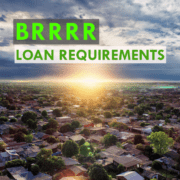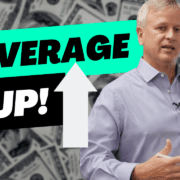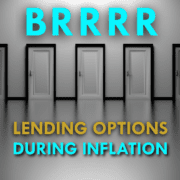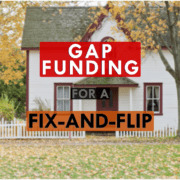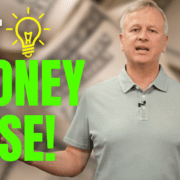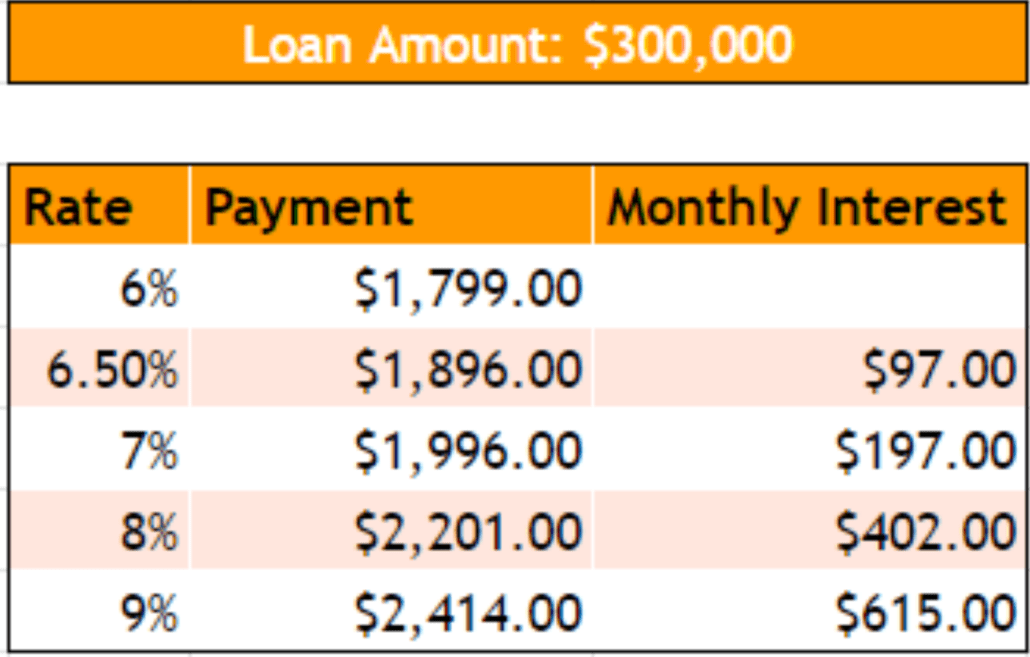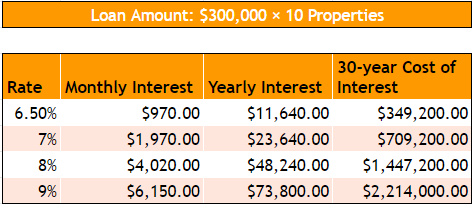Here’s what a HELOC is and why you should be using it as a real estate investor.
More and more investors have been calling us to ask about HELOCs.
With traditional, non-traditional, and hard money loans, why would a real estate investor need a HELOC?
In times like this with money tightening, it’s hard to get all the money you need for a project from a lender.
Let’s talk about what a HELOC is, how to get one, and what to do with it to leverage your real estate investments.
What Is a HELOC?
It stands for Home Equity Line of Credit. But what exactly is a HELOC?
It’s a Lien
A HELOC is a lien against a property.
It can come as a first, second, or sometimes even third mortgage. If you don’t owe anything on your house, you can put a HELOC in first position. With an existing mortgage, it’s put in second position.
It’s a Line of Credit
A HELOC is set up kind of like a credit card. The bank sets a limit they’ll lend and a term for how long.
A HELOC can pay for almost anything related to your projects. You can go to Home Depot and get materials, you can pay your contractors, you can make a down payment. It can take the form of a bank wire, a debit card, or whatever other option your bank gives you.
At the end of the month or the end of a project, you pay the HELOC off, and all the credit is freed up. You can use it again, pay it down, then use it again for as long as the term is active.
Typically, the bank will set a 10-year term. So for 10 years, you can use and re-use it up to the limit they set. If your property goes up in value during that time, it’s possible to get a refinance for a higher limit.
It’s a Faster, Easier, Cheaper Source of Money!
Any expenses you can put on a HELOC frees up your investment experience. When you borrow from other places (hard money lenders, banks, etc), there’s more paperwork and more cost.
HELOCs are easier, faster, and cheaper. A successful investor uses every leverage tool at their disposal, so it’s important to tap into this one.
Benefits of a HELOC
The uses and benefits of a HELOC for a real estate investor are broad and huge. This line of credit is one of the best ways to tap into your existing money to create more money.
Let’s take a look at a few of the ways you can utilize your HELOC to benefit your real estate investments.
Down Payment
You can use a HELOC as a down payment on any loan – hard money or long-term. Anytime a lender requires a down payment, you can take the money off your home equity line of credit, and bring it to closing.
For down payments on rental properties, your lender will still require the money borrowed from your HELOC to be included in your debt ratio.
Construction Costs
For a flip or a BRRRR, you can use money from your HELOC to cover the costs of construction.
Money from a hard money lender or bank comes at a higher price. If you’d prefer to use your HELOC to cover construction costs, you can lower the amount borrowed from a lender.
A HELOC will be some of the cheapest money you can find out there – especially now with money tightening. Using it helps lower your overall costs.
Another benefit of a HELOC is the speed and flexibility. If you don’t have time to wait for your lender’s escrow process to pay your contractor, you can just pull the payment off your HELOC.
Carry Costs
Carry costs include monthly interest, HOA fees, mortgage payments, some materials and construction, and any other regular cost associated with owning the property.
These costs can turn into a burdensome expense on a flip. You can pull from your line of credit to cover carry costs, and when your flip sells, you can put it all back in.
Buying Properties at Auction
There will be more foreclosures coming up soon. To take advantage of this turn in the market, you can use money from your HELOC to buy a foreclosed property at auction.
The benefit of a HELOC here is that you don’t have to get lender approval or meet lender requirements before placing a bid on a property. You can pull from it, pay for the property (or at least the down payment), and refinance later if needed.
Buying Wholesale Properties
You can also buy properties from wholesalers or the regular marketplace when you otherwise couldn’t. You close with a HELOC, then go back and refinance with a hard money or bank loan.
With this strategy, you can close on a deal faster than anyone else. You don’t have to sift through the paperwork and red tape of a loan; just go to the bank and wire out the funds.
Bridge Loan
Some investors use their HELOC to bridge between properties.
They have one flip for sale, but they’re ready to buy their next one. They use a HELOC to cover the down payment, then pay it back when the other property sells.
You can create your own bridge loan by using a HELOC.
Lend to Other People
You can also use it to lend to other people in the real estate investment community at a profit.
You can borrow from a HELOC at a rate of 5-6%, and you could charge someone else up to 10-12%. (But of course, always be careful and protect yourself when lending to other people).
Overview of the Benefits of a HELOC
- Using your HELOC allows you to use your money, without taking anything from your savings or 401k
- You can tap into the equity that’s already at your disposal
- It keeps projects going while typical loans are tightening up
- You can get into properties quickly and refinance a few weeks later
- You can avoid the higher rates of external lenders by borrowing from your HELOC.
Primary vs Secondary HELOCs
You can get a HELOC from two sources: the house you live in, and, potentially, some of your rental properties.
What is a HELOC on a Primary Home?
HELOCs are calculated using LTVs and CLTVs (combined loan-to-values).
To calculate this, the bank looks at the loan balance for your first mortgage, plus what the HELOC will add to it. Then they divide that by the value of your home to get to the combined loan-to-value.
Most banks and credit unions will go up to 90% CLTV, but some do 100% on primary homes.
Using a HELOC unlocks all the equity you’ve established on your home as home values go up over the years.
What is a HELOC on a Rental?
Rental HELOCs are a little more limited. They have different LTV/CLTV requirements.
For rental properties, there are some banks, credit unions, and mortgage brokers that will allow HELOCs in second position that go up to a CLTV of 65% to 75%.
Different lenders will limit the amount of secondary HELOCs differently, but most will give you one or two properties.
When To Get a HELOC
Start using your HELOC now, before home prices go down.
If you have a lot of equity in your rental properties or home, you can tap into that now while the market’s still high. This limit will be locked in for 10 years, even as your home value will likely come down 5-10% in the next six to nine months.
If you wait to take out your HELOC, you’ll lose more of your available funds.
Where To Find HELOCs
There are three places you can look to find HELOCs.
1. Credit Unions
Credit unions will have the best HELOC rates and terms. We’ve found that to be universal state-to-state.
Shop around at local credit unions. Make sure the lender you’re working with likes real estate investors. Each lender has their own niche. One may prefer doing car loans, but another will prioritize HELOCs.
You’ll find the best deal from a credit union, but you should still shop around for the right one.
2. Local Banks
Local banks usually like to work with real estate investors. They’ll have more products available as far as HELOCs for rental properties and HELOCs on multiple properties.
3. National lenders
Now that the refi-boom is settling down, national lenders and mortgage brokers are starting to offer HELOCs. Going through a national lender will open you up to more products, but the cost is almost guaranteed to be higher.
Consider all three of these options to find the best deal you can. For a HELOC, the “best” deal involves not just rate but LTV.
What Is a HELOC and More
You can use a HELOC to take advantage of what’s happening in the market in 2022.
If you need more guidance with a HELOC of your own, reach out to HardMoneyMike.com.
For one-on-one help, send us an email at mike@hardmoneymike.com. We’re happy to coach you through any real estate investment questions.
Happy Investing.


